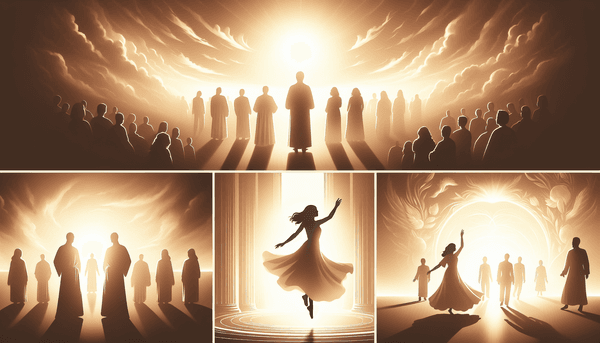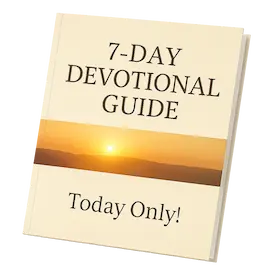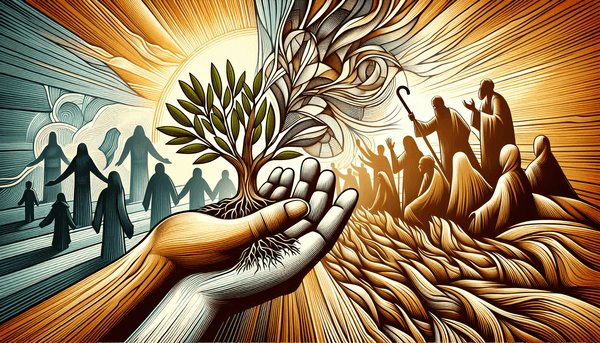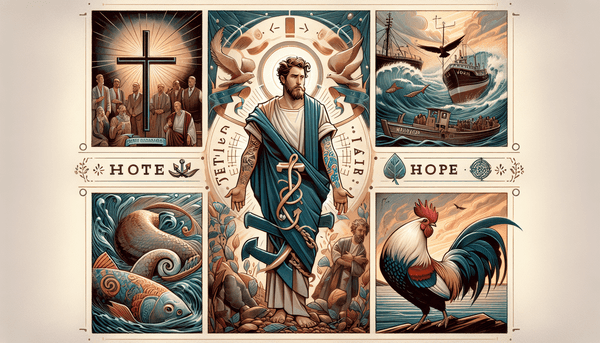The Concept of \"Halo\" in the Bible
In the artistic depictions of saints and holy figures across various cultures, we often see the 'halo', a ring of light that symbolizes sanctity. However, this iconic representation does not find its origins in biblical scripture. The Bible speaks of light and purity in other profound ways. For instance, Jesus is described as the 'light of the world' (Matthew 5:14-16), a metaphor for His divine truth and guidance. Psalm 104:2 portrays God as being 'wrapped in light as with a garment', signifying His majesty and purity. Similarly, 1 John 1:5 tells us that 'God is light; in him there is no darkness at all', emphasizing His perfect holiness. Revelation 21:23 envisions a future where 'the glory of God gives it light', indicating the divine presence. These verses offer a rich tapestry of how divine presence and purity are portrayed without the physical depiction of halos.
Dancing in the Bible
Dance is an expression of joy and celebration, and this is echoed within the Bible. Biblical references to dance often occur in contexts of rejoicing and praise. Psalm 149:3 encourages the faithful to 'praise His name with dancing', demonstrating the act as a form of worship. Similarly, the book of Ecclesiastes (3:4) acknowledges there is 'a time to dance', situating it within the ebb and flow of life's seasons. In the narrative of King David, we find him 'dancing before the Lord with all his might' (2 Samuel 6:14), symbolizing his unbridled joy in the presence of God. The parable of the prodigal son also features a festive scene where 'the older son heard music and dancing' (Luke 15:25) upon his brother's return. Jeremiah 31:13 speaks of young women rejoicing in dance, a vision of joy and community restored. These passages illustrate that dance, contextualized with reverence and celebration, aligns with biblical principles of worship.
The Rapture
The rapture is a captivating eschatological theme depicted in Christian theology, rooted in the biblical text of 1 Thessalonians 4:16-17, which describes a future moment when 'the Lord himself will come down from heaven' and believers will be caught up to meet Him. This passage, along with Jesus' promise to gather His elect 'from the four winds' (Matthew 24:31), and the assurance of transformation 'in a flash, in the twinkling of an eye, at the last trumpet' (1 Corinthians 15:51-52), has led to various interpretations among Christians. Revelation 3:10 speaks of being kept 'from the hour of trial', suggesting divine protection for believers. Meanwhile, Jesus' words in John 14:1-3 offer comfort that He is preparing a place for His followers in His Father's house. These scriptures have been the foundation for understanding the rapture as a moment of deliverance and reunion with Christ, though interpretations of its timing and nature vary among believers.
FAQ
Q: What does the Bible say about dancing?
A: The Bible references dancing as an expression of joy and worship. Psalm 149:3, for example, encourages praising God's name with dancing, while Ecclesiastes 3:4 acknowledges dancing as part of life's seasons of celebration.
Q: Is Israel justified going after Hamas?
A: The Bible does not comment on modern political conflicts directly, but it emphasizes the pursuit of peace and justice. Romans 12:18 instructs believers to live at peace with everyone, as much as it is within their power.
Q: What does the Bible teach about the rapture?
A: The Bible describes the rapture as an event where believers will meet the Lord in the air, as detailed in 1 Thessalonians 4:16-17. It is seen as a time when Christians are delivered from the coming judgment and united with Christ.
Q: How can one change the language to Polish?
A: I apologize, but as a language model, I am unable to switch languages within this platform. However, you can explore the settings of your device or application for language options.






